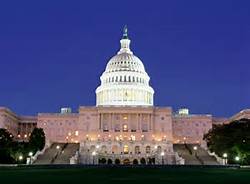What Neuroscience (and Cows) Tell us About the Government Shut-Down
 Originally implemented by a faction who were dissatisfied with the results of the democratic process that launched the Affordable Care Act four years ago, the Republican-led government shut-down has now degenerated into an inexplicable conundrum. Searching for some rational purpose and pathway of escape from the self-inflicted national disaster, Mark Thiessen at the Washington Post and others are now calling this tragedy the “Seinfeld shutdown”–a shutdown about nothing, as absurd as the premise for the Seinfeld sitcom. But such bewilderment comes from viewing the perplexing situation from a political perspective rather than recognizing precisely what we are seeing play out on the national stage–the neuroscience of herding behavior.
Originally implemented by a faction who were dissatisfied with the results of the democratic process that launched the Affordable Care Act four years ago, the Republican-led government shut-down has now degenerated into an inexplicable conundrum. Searching for some rational purpose and pathway of escape from the self-inflicted national disaster, Mark Thiessen at the Washington Post and others are now calling this tragedy the “Seinfeld shutdown”–a shutdown about nothing, as absurd as the premise for the Seinfeld sitcom. But such bewilderment comes from viewing the perplexing situation from a political perspective rather than recognizing precisely what we are seeing play out on the national stage–the neuroscience of herding behavior.
Human herding behavior in cognitive neuroscience and psychology describes the alignment of thoughts and behaviors of individuals in a group through local interactions rather than being imposed by central coordination. This well-established and powerful human behavior is not the product of reason. It is an automatic, unconscious, neurobiological process that evolved in the human brain to enable us to form complex social structures. (The premise here is that Speaker Boehner is not imposing central control on the behavior of his group; neither is Senator Ted Cruz, which from the evidence seems a safe assumption.) This herding of individuals into groups is the glue that binds people into social structures according to national identity, religious affiliation, and political parties. In lesser matters human herding causes us to embrace fads and fashions. At its worst, human herding generates mass hysteria, spawns gangs, ignites mob violence, and to this we must now add, sabotages operation of the government.
An essential element of herding in human society is that individuals often converge by modeling behaviors and beliefs of the larger group within which they are embedded. This coalescence of thoughts and behaviors into the group removes a person’s sense of individuality. Psychologists have studied and shown that this herding behavior profoundly reduces the normal constraints within individuals against deviant behavior. Anonymity and the accompanying reduced empathy and compassion by individual’s massing into herds drive cruel behaviors often without conscious awareness. Would any member of congress personally stand in front of the hospital door to block a mother bringing her child with cancer to the NIH to receive a potentially life-saving treatment? Would a single congressman or congresswoman, personally restrain his neighbor from going to work in the morning to support himself and his family and contribute to society productively in his own way? Would any congressman walk through the animal facility in government run biomedical research institute hanging “euthanize tags” on cages housing experimental animals that can no longer be used for research or kept alive indefinitely?
No. Any of these actions on the individual level would be unacceptable. They would be viewed as intolerable or illegal deviant behavior, except for the psychosis of herd mentality, a force of nature beyond control of the individual.
The brain circuits involved in social cognition are being revealed by new techniques, notably human brain imaging. The capacity to implicitly understand other people’s behaviors, intentions, social beliefs, and personality traits is essential for us to form complex societies. Other animals lacking such complex social structures do not have these neural circuits. Mirror neurons, for example, are nerve cells that fire in our brain when we watch another person carryout a similar action to ours. These neurons promote interaction between individuals and the group. Emotional contagion is similarly subcortical–beyond the rational mind. Our individual emotions rise and fall with the emotions of others in our group–be it raucous jubilation in the crowd at a rock concert, love among a gathering of people at a wedding, grief at a funeral, or a child’s tantrum infectiously souring the mood of all around him. Laughter, yawning, the urge to vomit are all individual behaviors triggered automatically by following the herd. Each of these has survival value, but the behavior cannot be comprehended from a rational view or by looking only at the behavior of the individual in isolation. This is the neuroscience of cows and people, animals in which herding is the essence of their being.
Although many of our behaviors, including herding, are unconsciously automated, the human brain also has a “top-down” control circuit that equips the cerebral cortex to moderate instincts of the human brain through rational thought. Perhaps political reasoning has exhausted its power. Turning to the neuroscience of human social behavior might shed light that could illuminate a pathway to emerge from this national tragedy. We are all a members of a larger group. United we are all citizens of the larger group called America. This is a group that aspires to a disciplined and deliberate process that was brilliantly conceived by our founding fathers and fiercely defended with the blood of our loved ones for one reason–to respect the individual and protect them from herds.
This article was first published on my Psychology Today Blog http://www.psychologytoday.com/blog/the-new-brain/201310/the-neuroscience-herding-and-the-government-shutdown
More to Explore:
Raafat, R.M. et al., (2009) Herding in humans. Trends in Cognitive Sciences 13, 420-428.